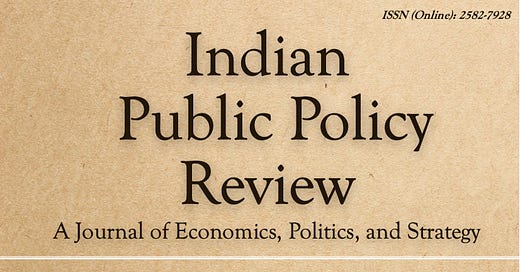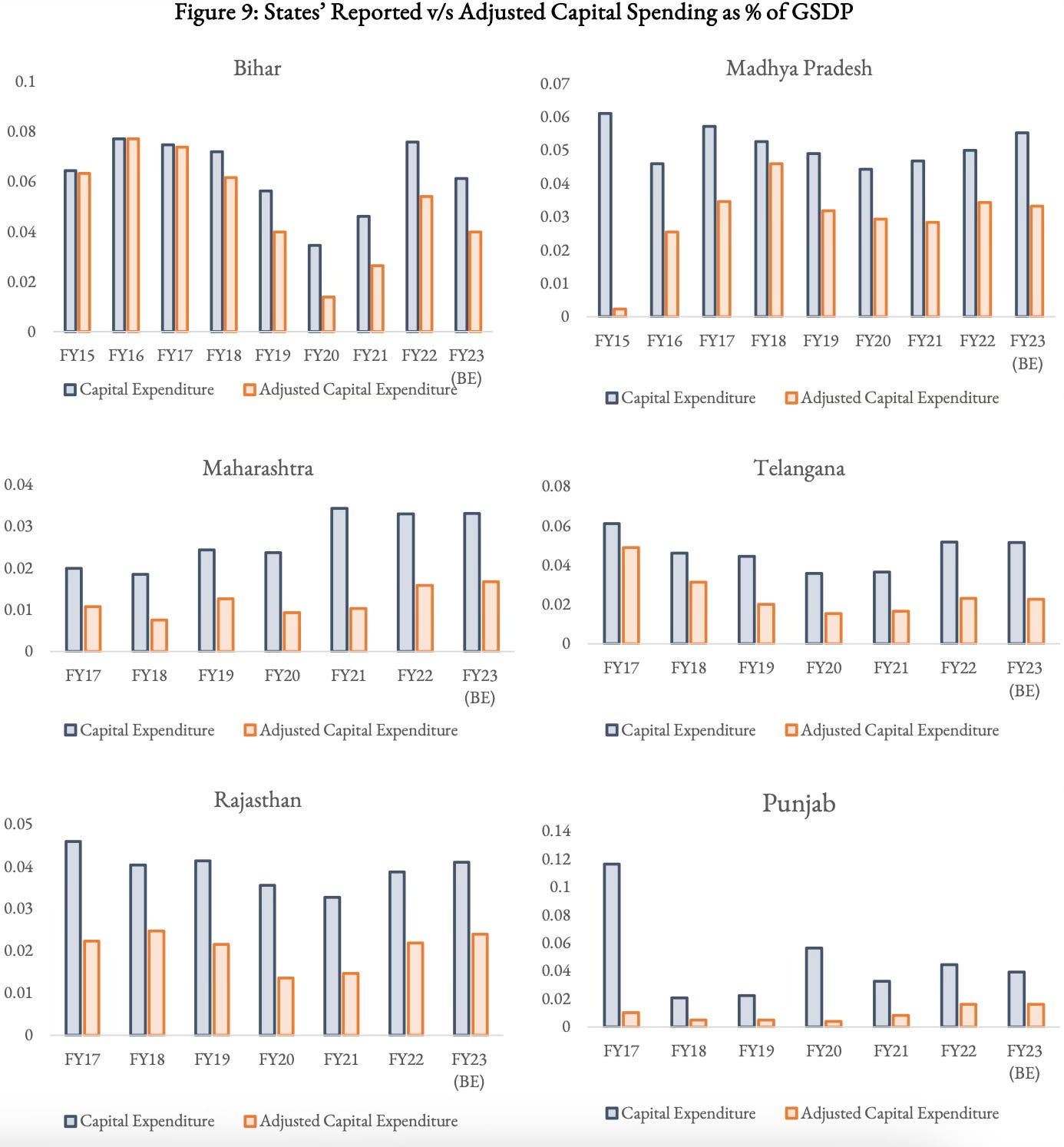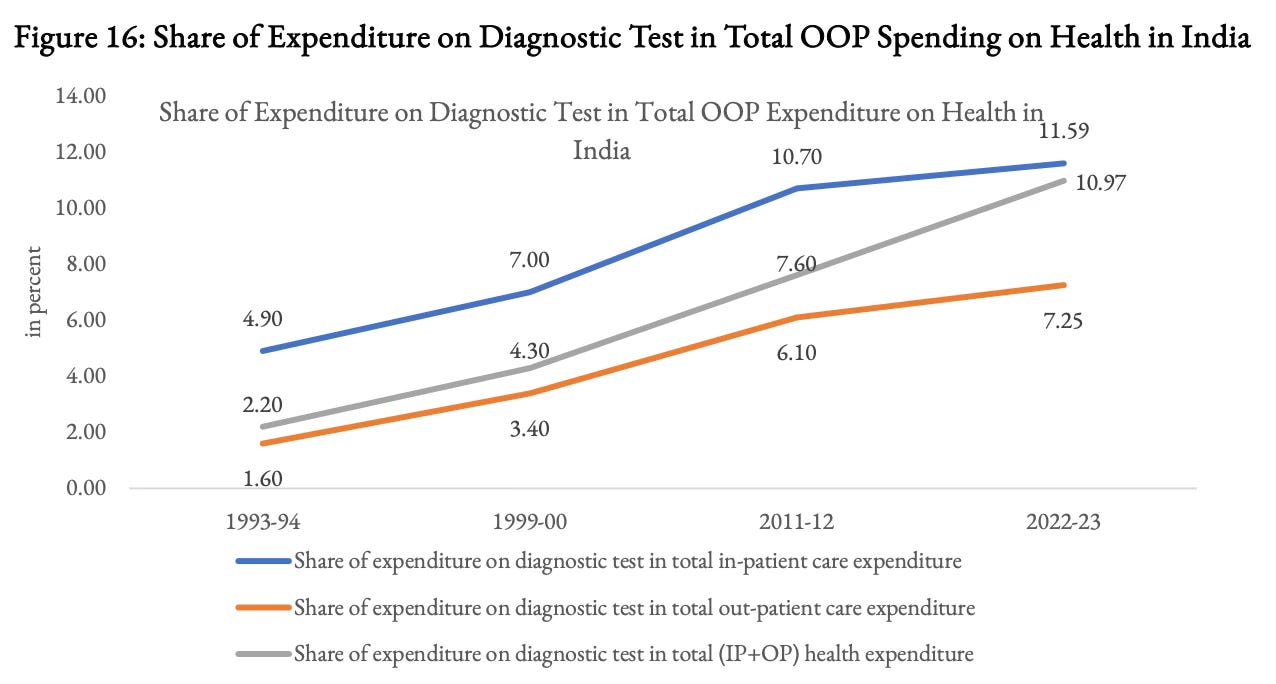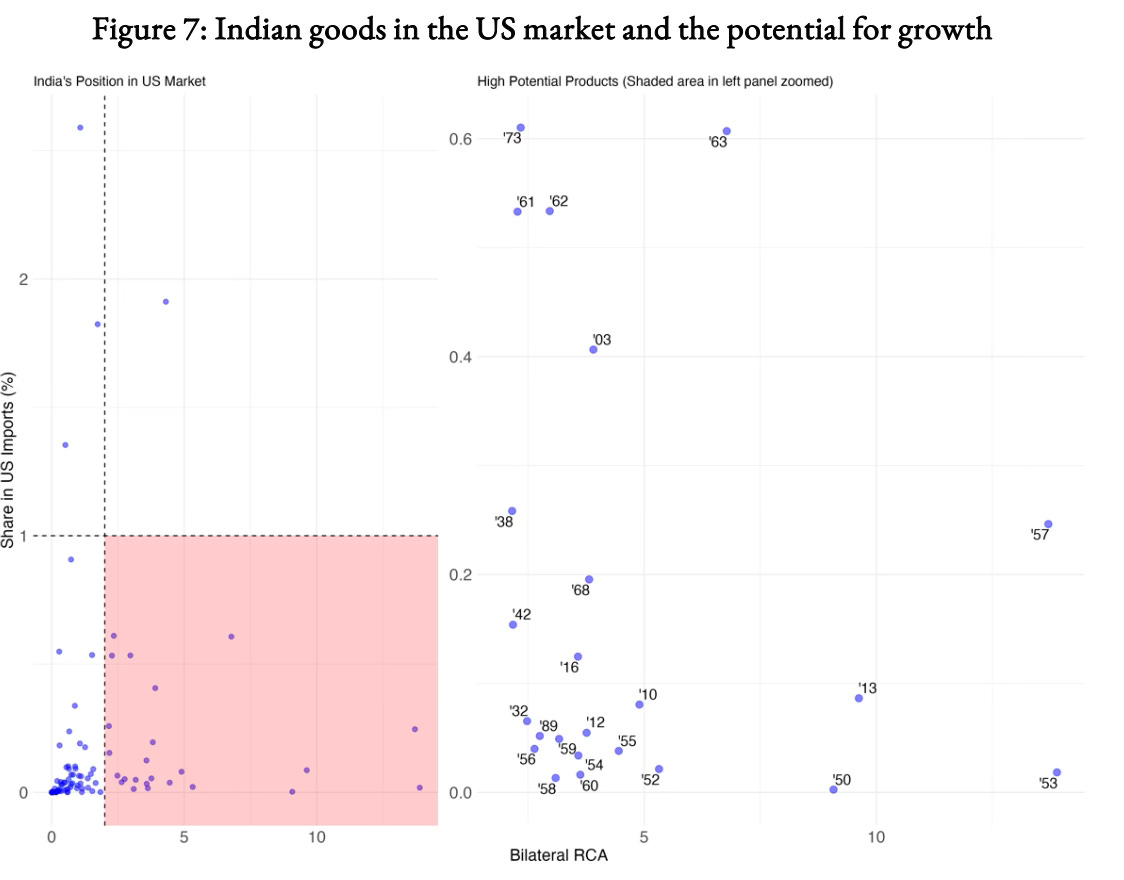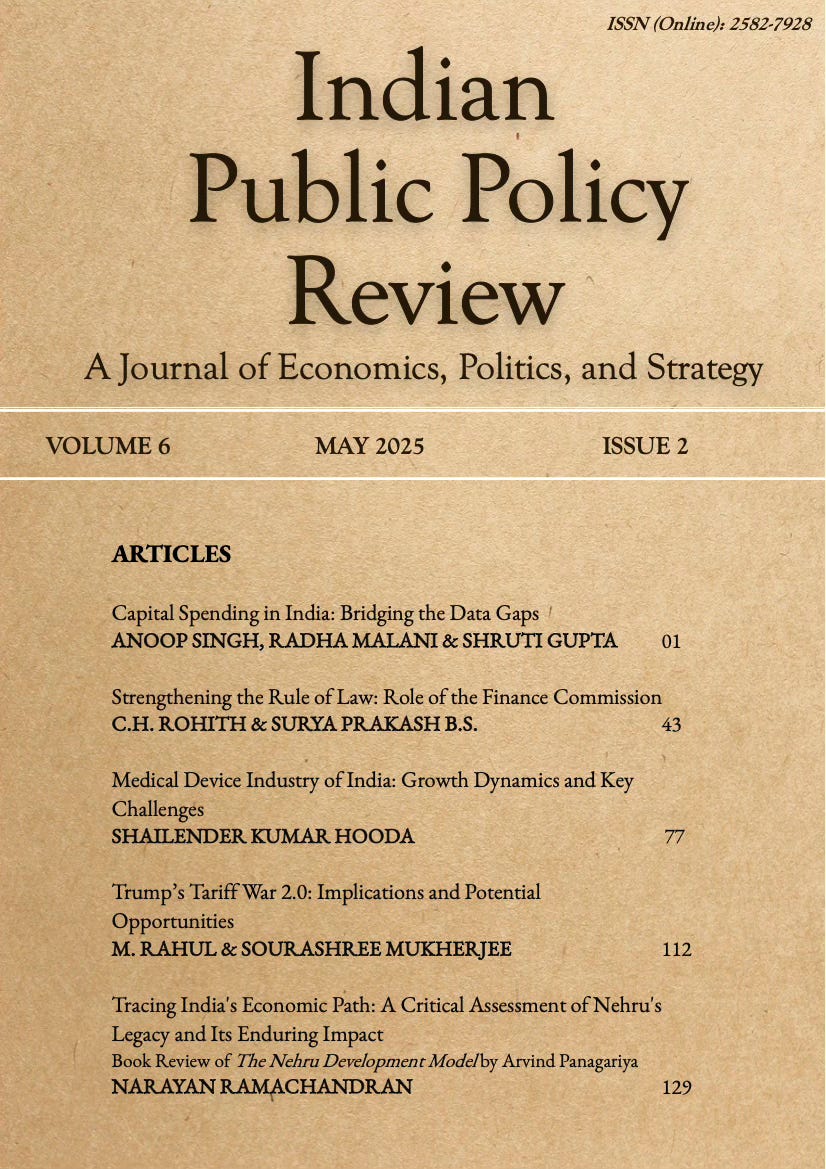#6.2 - How much does India really spend on Capital Expenditure?
India's Capex reporting, disparities in judicial expenditure, India's medical devices industry, India's opportunities in a trade war and Nehru's development model
IPPR May Issue
Greetings all,
The May issue of IPPR has some exciting papers on misreporting and inconsistencies in capital expenditure undertaken by the union and states; vertical and horizontal disparities in spending on judiciary, factors that can drive the growth of the medical devices industry in India, opportunities for India to increase exports to the US and a book review on the developmental model followed by Nehru.
You can read the entire issue here.
Here’s a brief summary of the articles in this issue:
1. Capital Spending in India: Bridging the Data Gaps
Author(s): Anoop Singh, Radha Malani & Shruti Gupta
This paper critically examines capital expenditure (capex) reporting practices in India. While the reported capex has risen significantly in recent years, a deeper examination reveals inconsistencies, data gaps, and misclassifications that undermine the accuracy, accountability, and effectiveness of these estimates. Significant portions of the reported capex are allocated to loans and advances to state governments, public sector enterprises, and debt repayment rather than direct asset creation. The paper compares India’s reporting practices with international standards, emphasising the need for accrual accounting, comprehensive reporting, and eliminating misclassification of capex.
2. Strengthening the Rule of Law: Role of the Finance Commission
Author(s): C.H. Rohith & Surya Prakash B.S.
This paper examines the budgeting process and the allocation of funds to the judiciary at the state and union level. It reveals both a vertical disparity (between the union and state governments) and horizontal disparities (across the states) in budgetary allocation towards the judiciary in India. The paper utilises several metrics (pending cases per lakh population, judicial expenditure per capita, expenditure per subordinate court, case burden per subordinate court, etc.) to understand the disparity of public funding of judiciary from various dimensions. The paper proposes reform measures to the Sixteenth Finance Commission to improve the budgeting for the judiciary, allocation of money to courts, and the utilisation of funds.
3. Medical Device Industry of India: Growth Dynamics and Key Challenges
Author(s): Shailender Kumar Hooda
This paper reviews the demand and supply side factors, including socio-economic, market-enabling, technological and policy instruments, that could drive the growth of the medical device industry. Despite there being several enabling factors for the sector’s growth, India primarily manufactures medical equipment within the low-tech segment, from consumable to implantable devices. This leaves domestic requirements unmet in other segments, pushing the country to import expensive equipment in the advanced technology segment. This drives up the cost of medical equipment, leading to higher diagnostic test fees for end-users, which in turn places a significant out-of-pocket financial payment burden on households for diagnostic services.
4. Trump’s Tariff War 2.0: Implications and Potential Opportunities
Author(s): M. Rahul & Sourashree Mukherjee
This article explores the ramifications and possible opportunities arising from the tariff war initiated by President Donald J. Trump during his second term in office. The implications of these tariffs on global economic stability, investor confidence, and commodity prices are examined, along with strategic retaliation by affected countries. The paper also highlights India's position in this evolving trade landscape, identifying sectors with high potential to boost exports to the US market. This paper suggests that India could benefit from redirecting trade flows and enhancing its role in global value chains through appropriate policies.
5. Tracing India's Economic Path: A Critical Assessment of Nehru's Legacy and Its Enduring Impact
Review article based on “The Nehru Development Model: History and Its Lasting Impact” by Arvind Panagariya.
Author: Narayan Ramachandran
This review examines Panagariya's comprehensive analysis of Nehru's economic philosophy and policies, praising the book's extensive use of archival sources to trace India's journey from liberal trade policies to state-controlled industrialization. The book's significant contribution to Indian economic history notwithstanding, Panagariya's tendency to place excessive blame on Nehru alone can be questioned, on account of India's persistent statist tendencies that reflect broader historical forces and the failure of successive leaders to chart a different course.
We invite articles for publication in the future issues of the journal. We welcome original papers and book reviews across the following topics: Economics, Political Science, Public Finance, International Relations and Security, Political and Defence Strategy, Public Enterprises, and Science and Technology Policy, among others. More information on submissions can be found here.
We would appreciate sharing the journal with your friends, colleagues, and students and encourage them to make submissions as well. Finally, you can follow us on Twitter @IPPRjournal.
We look forward to your contributions.
Dr. M Govinda Rao,
Managing Editor, IPPR
Member, Fourteenth Finance Commission
📧: editor@ippr.in
IPPR is a peer-reviewed, bi-monthly, online, and an open-access journal that aims to provide a platform for scholars to get their research published without having to pay prohibitive fees and providing access to high quality literature to academics, policy makers, and even more importantly, to students.
ISSN (online): 2582-7928

